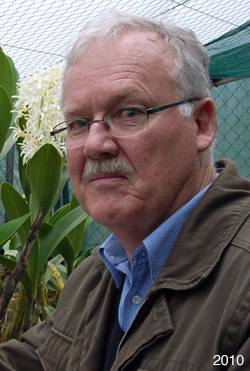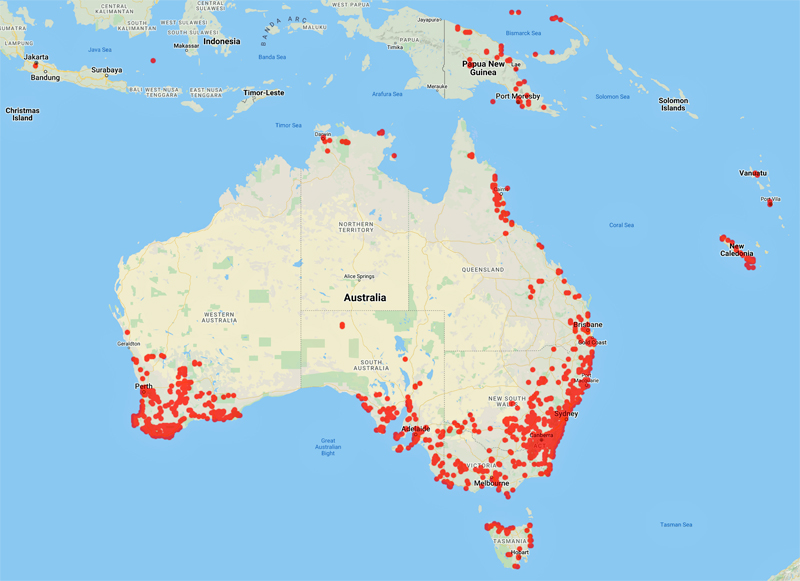
Council of Heads of Australasian Herbaria
Australian National Herbarium
Biographical Notes
 |
Council of Heads of Australasian Herbaria |
 Clements, Mark Alwin (1949 - )
Clements, Mark Alwin (1949 - )He grew up in Largs Bay in South Australia about 16 kilometres northwest of the Adelaide city centre.
Mark's father was a keen orchid grower and Mark himself developed his own interest from 10 years old.
He attended the Agricultural High School in Adelaide. During his high school years, he completed a course in wool classing which led to his first job, straight after school.
Between 1968 and 1974, Mark continued his training and development as a professional wool classer where he worked at many wool shearing sheds throughout South Australia and across the border in Western Australia.
During the two months or so that work was not available, Mark volunteered at the South Australian Museum, where he helped organise some of their natural history collections.
To pursue his interest in orchids and natural history, Mark decided to move to Canberra. He met with John Wrigley who was the curator of the gardens, at the Australian National Botanic Gardens (ANBG), and was offered a job as a gardener.
After a couple of years working as a gardener, an opportunity to work with the research team at the Gardens became available. Mark took up the position. Soon after, he started a collaboration with a Professor at the Australian National University, looking closely into the relationship between the mycorrhiza and corm cells.
In 1981, Mark attended the 10th World Orchid Conference in Durban, South Africa. He gave a presentation on his work entitled 'Propagation and re-introduction of endangered orchids of Australia'. While at the conference, Mark met Dr Phillip Cribb from Kew who thought that Mark's methods might be able to solve some of the problems with orchids that scientists were facing in the United Kingdom.
Mark was invited to work at the Kew Botanic Gardens, and he started there in 1983. He soon turned his attention to the conservation of England's famous lady slipper orchid. This species had been harvested from the wild for flower markets since Victorian times, until only a single plant remained.
Mark used his knowledge of orchid biology and in 1984, was able to finally cultivate the lady slipper, saving it from possible extinction.
Mark contributed to many revisions of the classification of the Australian orchids. He wrote the Checklist of Australian orchids and then re-wrote another volume called the Catalogue of Australian Orchidaceae.
After returning to Australia, he began his PhD studies on orchid embryology. His thesis was entitled 'Reproductive Biology in relation to phylogeny of the Orchidaceae, especially the tribe Diurideae.'
Mark was also a pioneer molecular systematist in Australian orchids. He has collaborated with many scientists throughout his career, contributing to the creation of an orchid phylogenetic tree, which reconstructed their spread and distribution around the world.
In 2016, in recognition of his lifetime of achievements and enormous contributions to the Orchidaceae family, Mark was awarded the prestigious Westonbirt Orchid Medal from the Royal Horticulture Society in the United Kingdom.
Throughout his career, Mark has authored many scientific publications and written and contributed to many books.
In early 2021, Mark retired from his position as Research Scientist at the Australian National Herbarium but remains an active Honorary Research Associate.
Source: Extracted from: https://csiropedia.csiro.au/dr-mark-clements/
Portrait Photo: 2010, M.Fagg.
Data from 9,368 specimens

